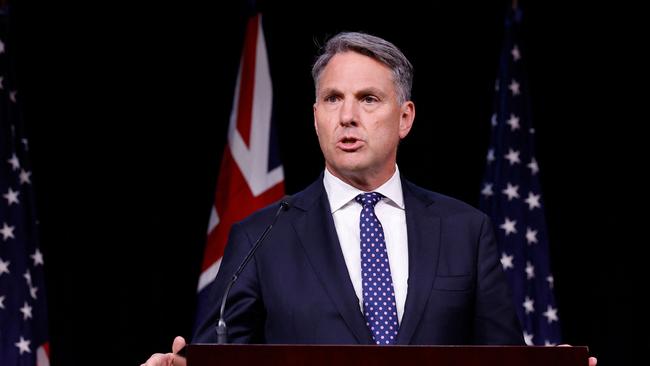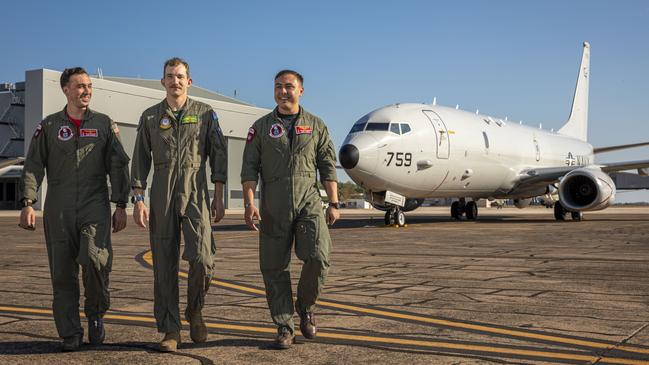
Under the plan, which has been hiding in plain sight for years, more US bombers will operate from Australia’s northern bases, including nuclear-capable B-52s. More US fighter jets and hi-tech surveillance aircraft will also fly missions from the Top End, while US Army amphibious units will join annual deployments of US marines that are now in their 13th year.
Add to this the five nuclear-powered submarines – four US and one British – that will operate from Perth from 2027, and it all makes for a pretty formidable deterrent.
As Defence Minister Richard Marles said after Wednesday’s AUSMIN talks in the US: “American force posture now in Australia involves every domain: land, sea, air, cyber and space.”
On one level, this is all to be expected. The US is Australia’s most important ally, and Australia’s strategic geography has much to offer our American friends. With the US’s main regional bases in Guam, Japan and The Philippines all within easy reach of Chinese missiles, it makes sense for Australia to pitch in and help to keep American forces safe from harm.

Australia also gains a lot from the arrangement. The ADF has no bombers of its own since the retirement of the F-111s, so having a force of B-52s that regularly operates from the Northern Territory is enough to give potential adversaries pause for thought. But don’t ask if the US bombers carry nuclear weapons. Our government certainly doesn’t. The prospect they might have nukes aboard is all part of the deterrent.
These deployments are, officially, “rotational” – that is, US forces are not permanently based here as they are in Japan, The Philippines and elsewhere – but the terminology is a convenient figleaf. The reality is these arrangements are deeply entrenched, and becoming more so. Take, for example, the US’s $600m-plus investments in new pavement, hangers, fuel tanks and weapons storage at the RAAF’s northern bases.
As the US’s top air force commander in the Pacific General Kevin Schneider said in Darwin recently, these investments will give US forces the flexibility they need in a future conflict. Moves to establish permanent US logistics and storage facilities in Queensland and near the Victoria-NSW border will further expand the US military’s footprint in Australia.
All of this is squarely in Australia’s interests, and is particularly well-timed for the Albanese government.
While its ministers will argue until they’re blue in the face that they’re pouring billions of new money into weapons and equipment, there is no doubt that short-term capability improvements are being de-prioritised to pay for nuclear -powered subs and navy frigates that are still a long way off.

The lack of money in the short to medium term has led to a fierce pushback by some, including former chief of army Peter Leahy, who said last week that Australia had become a “strategic liability” to the US.
Fortunately, Australia’s remoteness and willingness to host an ever-increasing number of American forces are valuable contributions that the US is happy to take in lieu of greater Australian firepower.




Australia has a potent strategy to fill gaps in the nation’s defence preparedness in the next decade. It can be summed up in three words: “The United States.”